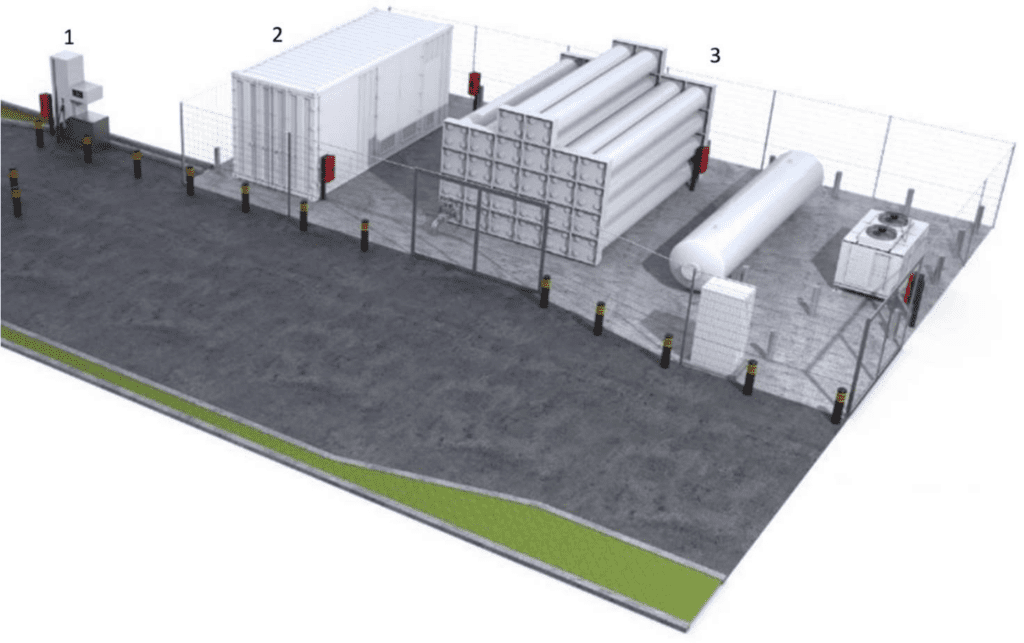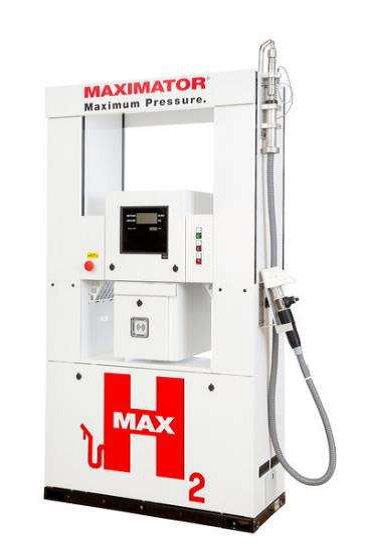Gaseous hydrogen is one of the fuel alternatives for means of transport previously powered by fossil fuels. In order for hydrogen to become a viable alternative, it is necessary to build a network of hydrogen refuelling stations that must be able to meet customer requirements and expectations. This includes filling the vehicle’s tank in an acceptable time, without violating any safety limits. In order to meet these requirements, filling station suppliers have to face some challenges regarding both the storage and refuelling of hydrogen gas. One challenge is the very low density of gaseous hydrogen. Therefore, gaseous hydrogen has to be compressed to high pressures to make it compact enough for storage and mobile applications. In order to achieve an acceptable driving range, hydrogen should be stored in the vehicle tank at a pressure of 350 – 700 bar.
Planning a hydrogen refuelling station for heavy goods vehicles.
Planning the construction of a refuelling station for lorries and buses differs from planning a station for cars because of the different areas of the station, the volumes of fuel required to be covered and the characteristics of the land needed to locate the station.
SAE J2601/2 “Refuelling Protocol for Gaseous Hydrogen Powered Heavy Duty Vehicles” specifies the performance requirements for hydrogen dispensing systems used to refuel fuel cell buses and trucks operating in harsh environments. Hydrogen refuelling for HDVs (high duty vehicles) differs from that of LDVs (light duty vehicles) in terms of volume, fill rate and refuelling pressure. This leads to differences in the specification of station components, the distance between them and the station layout itself. In addition, the larger own size of HDVs requires more space for parking and manoeuvring. These differences require a larger station area for the same number of vehicles served.

The construction and operation of each individual HRS requires approvals from various controlling authorities.
In order to reduce the time and cost of licensing, codes and standards are being developed, based on past experience. The permitting process includes a wide range of approvals to ensure safe operation. These approvals ensure compliance with regulations or standards relating to land use, environmental impact, public health, fire safety and worker safety. Special approvals include compliance with standards for hydrogen contamination, filling accuracy and discharge safety. From equipment components to station layout, design and location, codes and standards are gradually being developed. Some of these are international, such as the International Fire Code and the International Gas Fuel Code, and some are country- or even city-specific. The Fuel Cells and Hydrogen Energy Association (FCHEA) tracks and documents the development of around 400 hydrogen and fuel cell standards worldwide. In addition to the time required to obtain a permit, station space is a key factor in the planning and implementation of HRS, especially in urban areas where land availability is limited and station space must meet the minimum limit required by fire regulations.
Dosage
The distributor is the final part of the HRS and its main functions are to control refuelling, including checking that the hose is securely connected to the vehicle, restricting hydrogen flow within safety margins and checking that the vehicle tank is fully charged. The dispenser itself has strong similarities to the more common compressed natural gas dispensers, which operate at similar pressures.

